#Oceanic Eclectus
Text


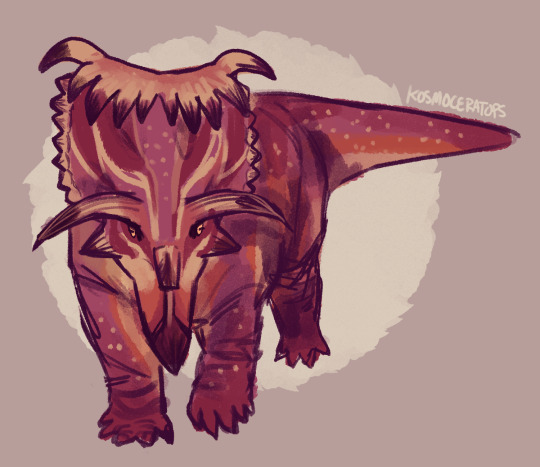

flocking time: too many birds edition :>
#my art#dinosaurs#paleoart#birds#passenger pigeon#oceanic eclectus#kosmoceratops#sao miguel scops owl
445 notes
·
View notes
Text
Paleostream 23/03/2024
WHOOPS GUESS WHO FORGOT TO POST YESTERDAY'S #Paleostream SKETCHES!!!
yesterday we drew Ectopistes migratorius (Passenger Pigeon), Eclectus infectus (Oceanic Eclectus), Kosmoceratops, and Otus frutuosoi (São Miguel scops owl)

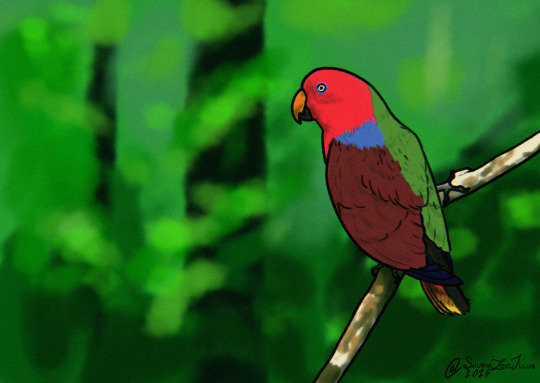
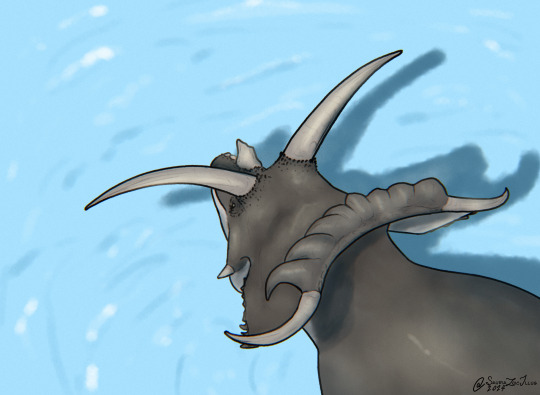

#Paleostream#paleoart#paleontology#digital art#artists on tumblr#digital artwork#palaeoart#digital illustration#id in alt text#sciart#dinosaur#bird#birds#bird art#pigeon#owl#parrot#Ectopistes migratorius#Passenger Pigeon#Eclectus infectus#Oceanic Eclectus#Kosmoceratops#ceratopsian#Otus frutuosoi#Sao Miguel scops owl#paleobr#palaeobr
46 notes
·
View notes
Text
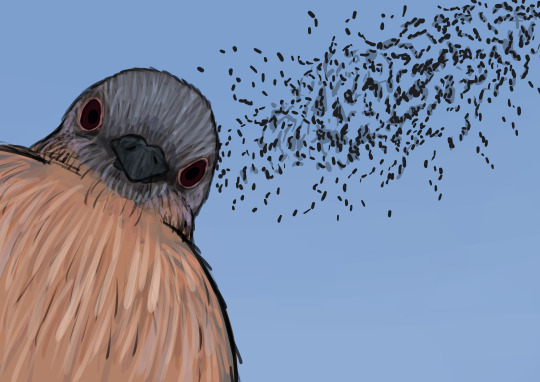
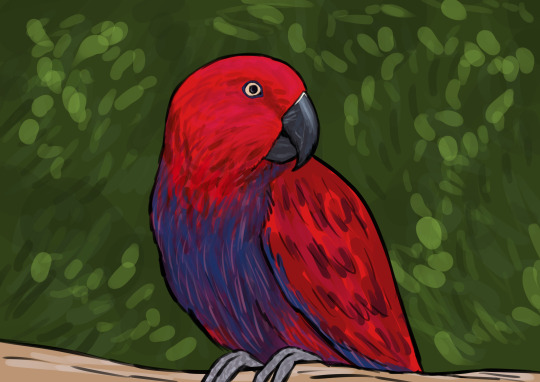

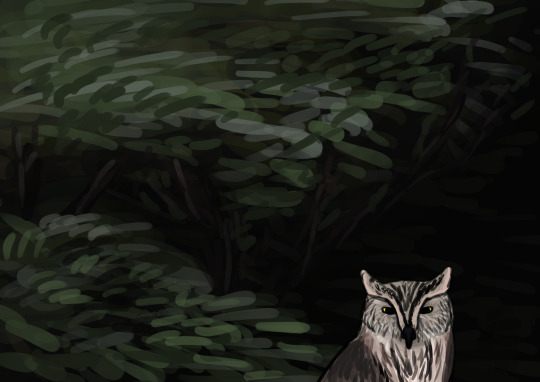
Doodles from today's extremely birdy flocking paleostream featuring the Passenger pigeon, the Oceanic Eclectus, Kosmoceratops, and the Sao Miguel Scops Owl.
125 notes
·
View notes
Text

Flocking Together
Passenger Pigeon
Oceanic Eclectus
Kosmoceratops
São Miguel Scops Owl
#paleoart#prehistory#paleostream#passenger pigeon#eclectus#kosmoceratops#scops owl#sao miguel#made with krita
37 notes
·
View notes
Photo
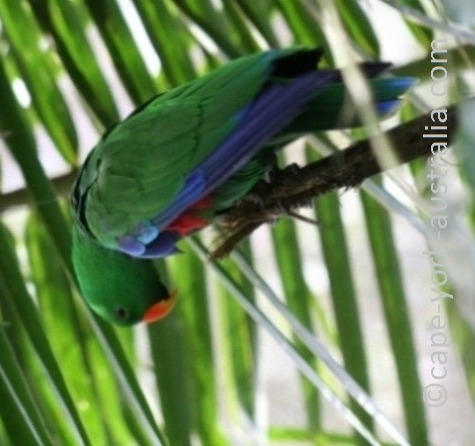
male eclectus parrot, cape york, australia
#eclectus parrot#australian parrots#Cape York#australia#queensland#nature#tropical#rainforest#jungle#ferns#palms#tropics#beach#ocean#hiking#bushwalking#swimming#snorkelling#scuba diving#crystal clear water#Wild Birds#parrots
31 notes
·
View notes
Text
Tag Game!
Tag 10 blogs you want to get to know better!!
Tagged by @partykeet and I'll tag @hunterkat @eclectus-mom @pom-seedss @sourdoughbirb (if you want to)
Name: MonGoose
Gender/pronouns: female, she/her (if you use the wrong pronouns I don't care cuz I cosplay/RP as a lot of male characters)
Favorite animal: ocean sunfish, oarfish, parrots, pigeons, chickens, goats, dogs, weasels, bees, deer
Average hours of sleep: too much abd not enough at the same time (that's insomnia)
Current time: 10:57am
Cats or dogs: I'm more of a dog person but I still love cats and whatever weird blob monster Dinkles is
Dream job: idk something with art or music, my head won't let me 'see' 5 years from now so this question is hard
When I made this blog: I think 2016 but my main account was made in like 2013
Why I made this blog: cuz birds make me happy and I wanna share
Reason for url: have you SEEN Yuki?!

6 notes
·
View notes
Text
Hey what’s up, that HTTYD 3 poster got me fucked up
So this official poster has been released for How To Train Your Dragon 3 and it has left me with... opinions.

My first initial reaction was excitement! Oh hell yeah HTTYD 3 is coming out! I adored the first two! But then i saw...
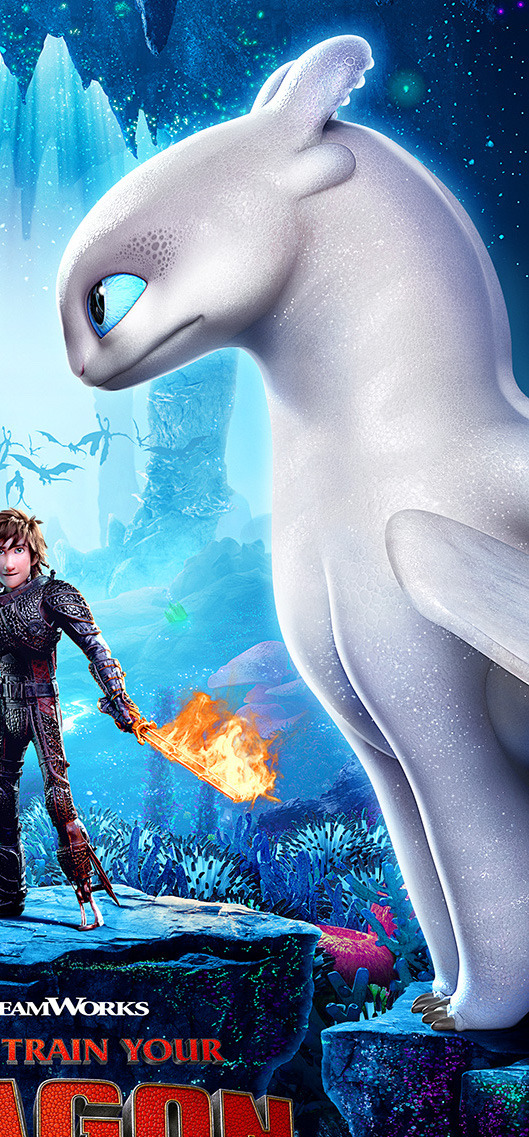
SIIIIIGGGGGGGHHHHHHH I knew immediately that this was most likely a female night fury and fuck yeah shit fuck it is which is so disappointing. I could write a huge essay on how female characters are portrayed in media. I could write a massive blog about smurfette syndrome and how female characters are always just a pink, soft version of their male counterparts, or how female animal or anthro characters still have to fall into society’s beauty standards so we do crazy things like give ducks tits or large eyelashes.
I COULD talk about why these things occur, and how this is a worrying reflection of how society views human females, that males are the default and females are the other... but I’m not going to do that TODAY.
Hi my name is India and not only do I have an animation degree, but I also have a degree in animal and veterinary science.
This design doesn’t just insult me as an animator. This design insults me as a scientist.
Let’s begin.
So if you asked me to design a female night fury for the poster, this is what I would have come up with:
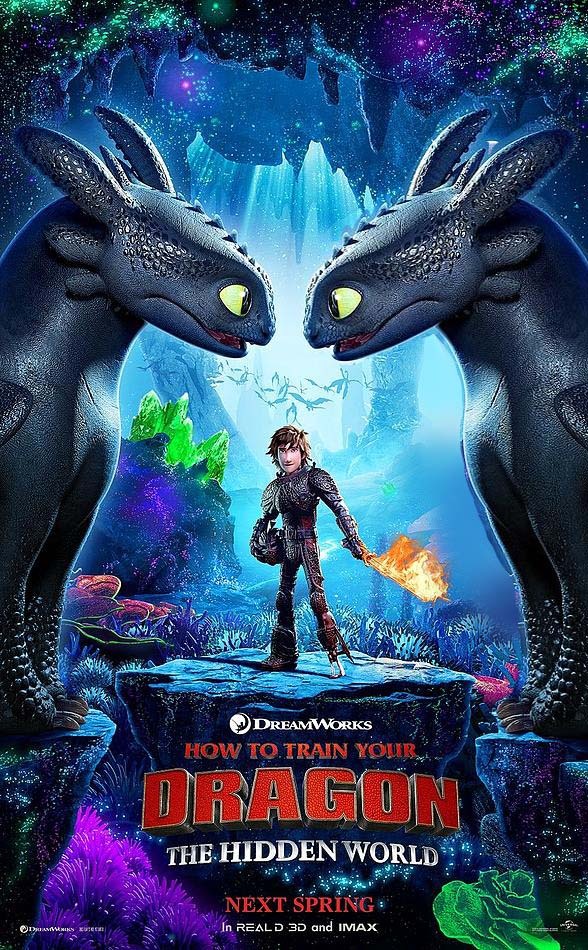
Because from a superficial perspective? I would not expect that there would be an obvious difference between males and females. Night fury’s obviously take a lot of design influence from axolotls, who you can only sex by examining their cloacas. Many species of lizards must also have their sexual organs examined for reliable sexing, because colour and size variation in many species are not a reliable way to tell the difference between males and females.

Someone paint this girl’s nails pink! Otherwise HOW WILL I KNOW?
But I digress that sexual dimorphism exists, and from an animation perspective, you need variation in the character design so people can tell your characters apart. Kids need to want BOTH toys goddamit.
Sexual dimorphism is most obvious and famous in many bird species. In birds of prey, particularly your fast birds of prey such as raptors, your females will be much larger than males. Colour variation in birds (and some reptiles) also occurs. But it is the MALE that is the most colourful and “beautiful” in order to attract their mate. Females are often shades of grey/brown and definitely not a colour that would make them an easy target in their environment.
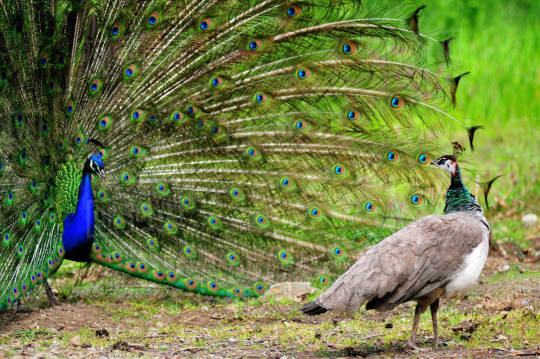
The female peahen is a basic bitch.
So keeping these size variations and natural colour variations in mind, here’s another suggestion I might offer:
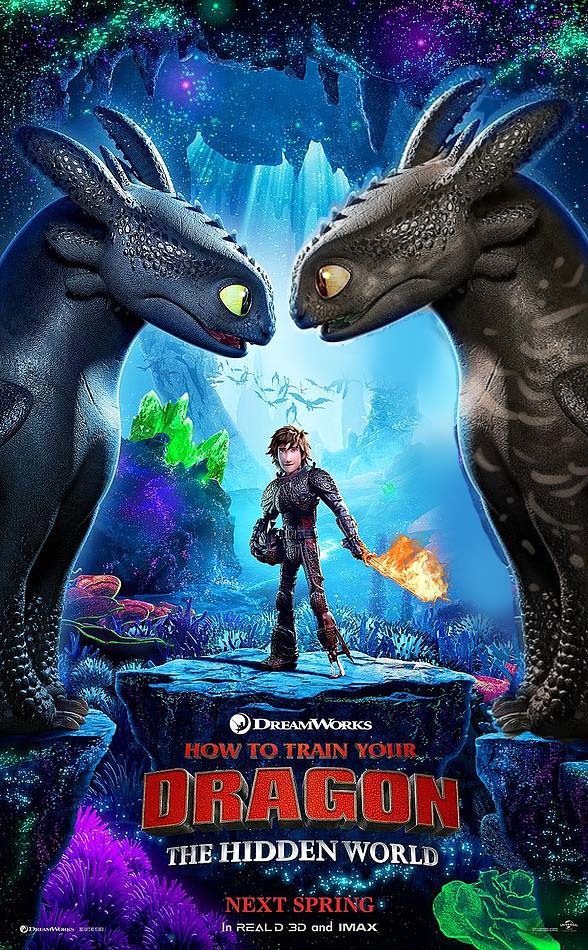
She’s larger! She’s a different colour! Toothless is the sleek, deep black almost blue colour, while she is more in that grey/brown area. I can totally tell the difference.
“But India!” I hear your protests. “Why can’t she be white?! You can have dramatically different coloured male and females in the natural world. Have you heard of eclectus parrots?”

And I would say “Yes! Yes I obviously fucking have! Of course I have heard of the eclectus parrots, who when they were first discovered, people thought they were two different species and kept wondering why they weren’t breeding when they put all the green parrots together and all the red ones together. I’ve course of fucking heard of eclectus parrots you wet petri dish!”
But here’s the thing about eclectus parrots. They live in the rainforest, so while they are different colours, there is still an element of camouflage to this colouring. The female blends into the green treetops and the male looks a lot like a delicious fruit.
A white night fury... just doesn’t make sense? Judging by when we first meet toothless, and my bullshit knowledge of fictional dragon behaviour, it’s fair to assume that night furys hunt at night. Toothless is so dark that he is almost impossible to see in the night sky. This is where the tension comes from when Hiccup first encounters the night fury. He just sees blue flame and not the dragon itself, because it is so difficult to make him out against the dark sky.
This female night fury would be shot down so quick. She would stick out terribly at night. She wouldn’t catch shit. All the sheep in the field would be like “Oh fuck, I can see Phyllis two miles away. We all better shuffle into the barn.” There’s a reason albino animals are so rare in the wild. They just stick out too much and often get eaten.
“But what if female’s hunt during the day? Wouldn’t being white help them blend in with clouds and the bright sky?”
THEN WHEN WOULD THEY FUCK? Would males and females just pass each other at sunset like fated star lovers? That’s stupid. That doesn’t make sense. This isn’t Ladyhawke.
But I’ll humour you. Yes, yes, we see white birds all the time. And you’re right! That white belly really helps them blend in with the clouds and bright sky.
But they’re not all white. Especially birds that have to hunt or eat on the wing. We see this kind of patterning a lot of sea birds. Their bellies are white, but the tops of their wings are dark grey/brown. This is so when they nest, or are maybe viewed by a LARGER bird from above, they will blend in with the land or ocean below. White against a deep blue ocean really stands out... But dark grey? Not so much.

“But Indiiiiiaaaa” some protests again like an absolute idiot who is about to be slapped out of their ignorance.
“Night Furys are so fast that nothing could possibly catch them! They don’t have to worry about camouflaging to avoid predators!”
Alright Dumbass McBitch! Do you know what the fastest bird in the world is?
It’s the peregrine falcon. GUESS WHAT THEY LOOK LIKE?

WHITE BELLY. DARK TOP.
The peregrine falcon is actually probably a decent comparison to the fictional night fury actually. Small in size, bird of prey, HORRIFICALLY FAST. But they have this sort of colouring for similar reasons. The dark colouring isn’t just camouflage during flight. It also helps them blend into their environment when they are nesting.
SO IF YOU SOMEHOW CONVINCED ME THAT NIGHT FURYS ARE ALSO ACTIVE DURING THE DAY I COULD CONCEDE A DESIGN LIKE THIS:

But it’s not just colour. It’s not just size. There are other things that worry me about the female night fury’s design. The first is that she seems to have fewer of those... antennae things? And the few she has are much shorter. We’ve seen Toothless use these and they seem to be similar to a cat’s whiskers in their sensory role. So why on earth would she have less? And they be much shorter? SHE NEEDS THOSE! Without them, she may have difficulty flying, orienting herself in the air or feeling the winds she will have to combat. The designers are trying to feminise her by making her seem sleeker and rounder... which functionally makes no sense... why not do the opposite? Giver her really long antennae! Have them constantly moving in the wind!
The other thing that I immediately noticed was how SMOOTH she looks. They took away almost all of her scales. And again... doesn’t she need those for protection? This is so odd to me because it feels like they’ve removed her scales in the same way that pin up artists never draw body hair. Body hair is seen as unsightly on women, so artists remove it, leaving their subjects smooth and shining.
Do... do the dreamworks designers think the scales are unsightly? Have they waxed this dragon? And replaced her scales with body glitter??? Guys.... guys...
Whyyyyyy
Also they made her nose a lot shorter? That’s stupid. Don’t do that.

Which one’s the girl?? Their noses are the same length so I can’t tell.
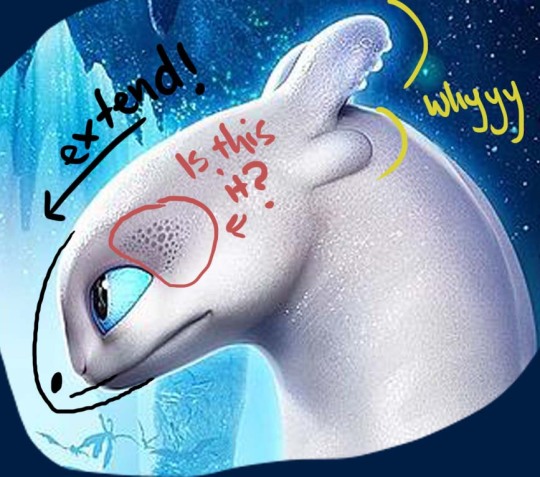
So I can actually greatly improve the original design by just remedying these things.

Oh yeah I made her claws bigger??? BECAUSE THEY FUCKING MADE HER CLAWS SMALLER.
But already I’m like... less pissed at it. Like “Aw yeah it’s still white, but at least they didn’t mess with much else.”
I think in a perfect world they would have given me something like this:

BUT! They did not.
And I’m not complaining just for the sake of complaining. I promise. This poster irritated me so much because HTTYD over the past 2 movies has had some stellar design. ESPECIALLY with it’s female characters. Astrid and Ruffnut are such courageous designs to me, because they’re not your classically beautiful disney knock off. Ruffnut is harsh looking. She has angles. She makes gross faces. These are all privileges that have traditionally been reserved for villains or men. Astrid is introduced in the first film like she’s some incredibly beautiful bombshell... but she really looks like a little girl. She’s kind of scrawny. She has only the smallest hint of a bust. She has a weak chin and her ears stick out, but it doesn’t matter because Hiccup thinks she is stunning.

Catch this chin in a disney movie. It will never happen.
We’ve even seen excellent female dragon designs! But we weren’t even aware that they were females because it’s not plot relevant, but they were not obviously coded. They just looked like sweet dragons!

Stormfly is a girl. You can tell by how much glitter in on her body and her short, rounded spikes.
I just wish the HTTYD designers took more risk with the female nightfury design. The design they came up with is lazy, predictable, functionally incorrect and... kinda sexist honestly. I will still see this movie. I will still marvel at all the other wonderful designs, but this has left a bad taste in my mouth.
From now on I hope to see more female characters that look like Sadie from Mouseguard

And less like ... this fucking shit
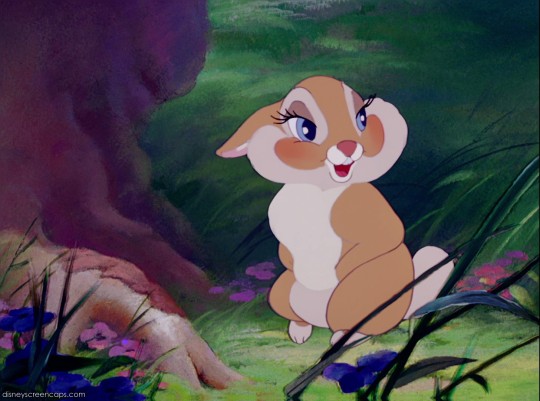
Not even Bambi is free from my wrath.
112K notes
·
View notes
Text
Extinct parrots I think are neat:
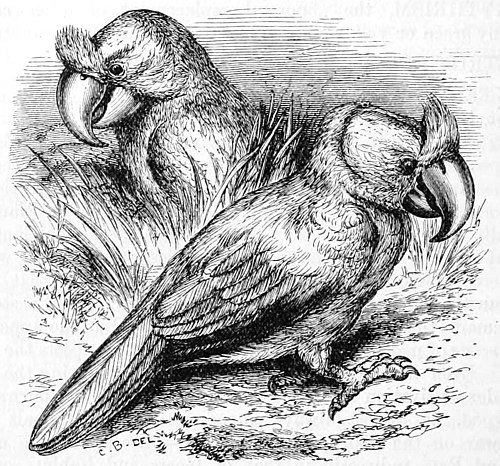
The Broad-Billed Parrot or Raven parrot: look at that guy! Looks like a dinosaur!
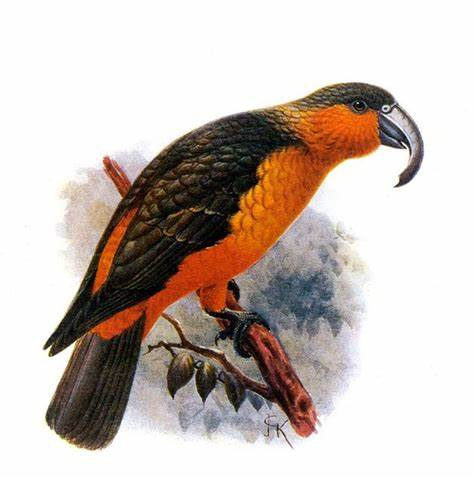
Norfolk Kaka: could probably eat me with that beak!
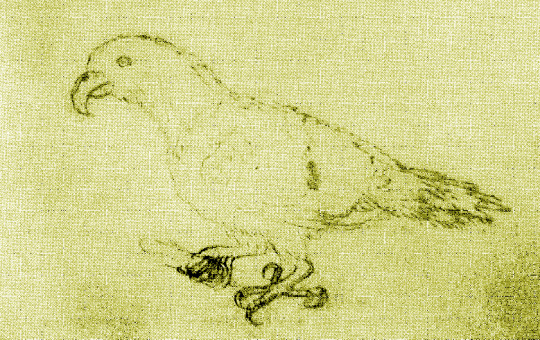
Oceanic Eclectus: A man of mystery!
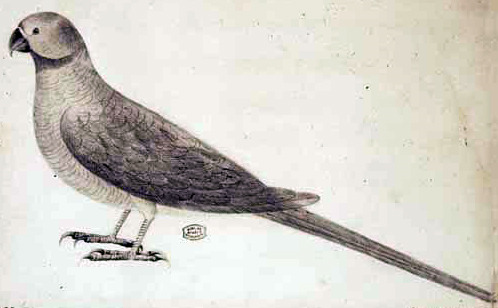
Newton’s parakeet: A good round boy with a polite smile!
40 notes
·
View notes
Text
SOLOMON ISLAND ECLECTUS PARROT FOR SALE
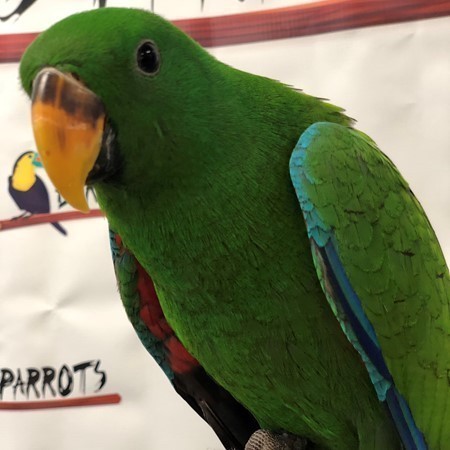
Solomon island Eclectus parrot for sale
Solomon island Eclectus parrot for sale also known as Solomon Island Eclectus Parrots –
Solomon Island Eclectus Smaller than the New Guinea Eclectus, the Solomon Island Eclectus is 12 inches (32cm) in length, occur naturally throughout the Solomon Islands east of mainland New Guinea and northeast of Australia in the Pacific Ocean; these islands include New Georgia, Malaita, Santa Isabel, Guadalcanal, San Cristobal, and Choiseul.
They are also native to Bougainville, New Britain, New Ireland, the Admiralty Islands and throughout the Bismark Archipelago.
Throughout their natural range, they are most common but they are impacted by deforestation within their range and political unrest on some of these islands. Therefore, their future is uncertain.
These regal, colorful parrots are also very popular in captivity as pets.
Male Solomon Eclectus Parrots have yellow-tinted green feathering over the majority of their bodies. Their primary wing-coverts and primary flight feathers are a dark blue color, edged in green. The upper side of the Solomon Eclectus male’s tail is green. The underside of the tail is black, edged with a thin band of pale yellow stretching for about ten millimeters. The iris is a reddish-orange color. Solomon island eclectus parrot for sale
Female Solomon Eclectus Parrots have stunning red plumage with dark blue under-wing coverts. They also have a band running to the nape that is dark blue.
Read the full article
#Bluemutationsolomonislandeclectusforsale#Bluesolomonislandeclectus#Bluesolomonislandeclectusforsale#BuySolomonislandeclectus#Eclectusparrotsforsalekzn#Malesolomonislandeclectusforsale#Solomonislandeclectusaspets#Solomonislandeclectusbirdsforsale#Solomonislandeclectusfemale#Solomonislandeclectusforsale#Solomonislandeclectusforsalesouthafrica#solomonislandeclectusforsaleuk#SOLOMONISLANDECLECTUSPARROTFORSALE
0 notes
Text
Interesting Facts About Penguins

Interesting Facts About Penguins
Many children have a fascination with the Penguin. Many parents also enjoy learning more about the creatures. Like hummingbirds, pelicans, and the bald eagle, the penguin is an incredible creature TBH. The GIF and MEME are so cute as well when you find them on twitter, Youtube, or Tiktok. SMH, those penguins are so cute, IKR?
So, how many types of penguins are there? Or, maybe, to be more specific, what does each type look like?
Penguins are one of the most diverse of all different animals. Their white coats vary depending on their age and activity level. Male and female pairs do not come in the same color. In fact, male chicks are completely different from female chicks.
The most common type of penguin is the Emperor Penguin. Although not as white as a white coat, this is still very elegant looking. Just like any other white-coated animal, they have no black markings. The Government of Australia published more research on Emperor Penguins in early 2020.
There are several different species of Emperor Penguins. These include the Black-legged, Black-backed, Brown-headed, Gray-bellied, Hooded, Light-fronted, Mottled, Orange-breasted, Red-bellied, Shaggy, White-bellied, and Yellow-tailed.
Some of the popular varieties of Penguin include: Emperor, Atlantic, American, Blue, Common, Coyote, Common, Cockatiel, Eclectus, Golden, King, Least and Standard. They are known to have different diets and for some species, they are not always a part of the marine life. For example, King Penguin is strictly land dwellers. Other members of the Penguin family that are known to be predominantly sea creatures include: the King Penguin, the Hooded Penguin, the Nape Penguin, the Porpoise Penguin, the Risso's Penguin, the Wrangell's Penguin, and the Wilson's Penguin. And to complete the scientific details, some of these species are classified under the class of "Uroplatus" which means that they belong to a subclass of penguins.
As previously mentioned, different types of penguins consume different types of food. For example, an Emperor Penguin feeds on other birds, fish, and squid. They also like to hunt for themselves, but not all of them will get to it. How many types of penguins do they have?
If you are wondering how many types of penguins there are, you don't need to be. It is possible to come up with an estimate by using simple math.
One of the easiest ways to determine how many types of penguins you have is to count the number of different meals that they can feed on. Each type has specific requirements that are associated with their diet. For example, a King Penguin will not eat at all of other birds.
If you are wondering how many types of penguins there are, you don't need to be. It is possible to come up with an estimate by using simple math.
King Penguin will not eat meat, but they do enjoy eating other forms of food such as krill, insects, small fish, squid, and small crustaceans. It is not uncommon for penguins to eat spiders, worms, and lobster.
One common misconception about penguins is that they only eat a few types of food. However, according to a study published in 2020, there are more than 100 species of penguins that are known to feed on different forms of food. As a result, there is a general misconception that only a few types of penguins feed on the same type of food.
Penguins originated in the South Pacific and are now very common in their traditional ranges throughout the world. Penguins inhabit all sorts of habitats, from dry land, to swampy areas, to coastal areas, and even icebergs and mountain tops. As they are keen hunters, a few have even ventured to the Arctic, as the harsh winters there are not as cold as in other parts of the world.
The question, "Where do penguins live?" is, probably, the most asked by people around the world. With more penguin species arriving at the Galapagos Islands each year, and many breeding there, there are many different variations on where these animals live. To answer this question, it's necessary to understand some of the basic facts about where do penguins live.
First of all, penguins are nocturnal, meaning that they spend most of their time sleeping at night, and very little of their time on the ground. Because of this, they're often found on islands, and the Galapagos Islands is no exception. These islands are home to a variety of habitats for penguins, such as saltmarshes, volcanic mudflats, and water bodies. Of course, penguins will also use icebergs and rock cliffs as nesting grounds. It's important to note that, in order to survive and reproduce, many penguins will travel great distances to find suitable locations to lay their eggs.
Of course, when you ask "Where do penguins live," you have to remember that there are different places, with different climates, where penguins live. In fact, some species prefer to nest on the sea floor, while others prefer to forage for food in the air. For example, Macaroni penguins prefer to forage near the ocean, while the Emperor Penguin prefers to forage for food on the sea ice. Other species such as the Emperor and Emperors, and Emperor Penguins, will even be found on islands where there are large glaciers, due to the fact that they spend most of their time basking in the sun, which helps them keep their bodies in good condition.
However, one place that's quite different from others is Antarctica. Penguins live in the Antarctic, where temperatures can reach nearly -80 degrees Fahrenheit, in much the same way as those that live in the water, such as off the Galapagos Islands.
Antarctica is an extremely extreme climate for penguins, and the penguins' habit of migrating hundreds of miles in search of suitable land to breed has led to them being called "The Emperor Penguins." For penguins, the Galapagos Islands is of great importance, because they are the home to the only species of Emperor Penguin that exists in the wild. The first Emperor Penguin lived on the islands, but after the devastating 1883 volcano eruption, this species was hunted down by humans. Luckily, a small colony of these unique penguins survived, and the remaining penguins left the island due to a lack of food and general population decline. Don't look for penguins in Boston, Hollywood, Texas, or Florida.
Now, scientists believe that these penguins have spread throughout the world, and many of these penguins are being reintroduced to the Galapagos Islands, and are breeding there. A healthy colony of these birds is an excellent proof of what many scientists believe: that life can be discovered through science, even when it is not there in the real world.
Keeping track of where do penguins live is a difficult part of knowing where penguins live. A small hole in the ground, a rock, or even a shelf on a cliff will do for some species, while an iceberg will work for others. Keep in mind that an iceberg isn't necessarily where penguins live, but it may be the best place to look.
Stay current with other amazing places and creatures on Earth such as Caspian Sea, Mt Pelee, Blue Hole Belize, red panda, horses, cats, dogs, tarsier, wolf spiders, moon bears, tibetan mastiff, jaguar, dolphins, maned wolf, crocodile, tigers, bunny, coldest city on Earth, tallest man, oldest woman, and so much more.
https://youtu.be/QOrJvAZgL88
Read the full article
0 notes
Text
Tagged by @littlerosebirb to do 11 facts about myself/the birds.
1. I’ve owned lovebirds for 14yrs and indian ringnecks/Avie for 9yrs (omg)
2. Avie and Lou will be getting a border collie brother or sister sometime this year.
3. Ive waited 23 years for a dog
4. I am babysitting my sisters golden retriever in the house and along with the birds its like heaven. It’s also getting Av accustomed to other animals in the house she is otherwise fearful of.
3. Lou loves cats - i bought home a handraised 3 week old kitten to look after and he just wanted to cuddle it and play with its toys. (Which even tho the kitten hardly had motor skills or teeth yet was only allowed 1 time and in that time i got some photos)
5. I’ve rehomed 3 birds, a budgie, a handraised sulphur crested cockatoo and a male eclectus.
6. I want to live on a farm so i can have indoor aviaries with my pet birds and also start a parrot/general animal rescue.
7. I love taking photographs of wildlife, mostly birds and have a 2nd side blog @birdography
8. I am a vegetarian so whatever i eat - the birds eat too!
9. Animal training is very thrilling for me and i would also love to become an animal trainer. (Along with the rescue)
10. I am in the process of organising my study to become an ornithologist
11. @misterwendall, my mum and I are going to see David Attenborough on the 8th of February 😍 so close…
I choose to tag @schokoladenkuchen @ocean-queen-lapis @buddy-berry @aderynnn @wetleavesandfeathers @tinysaurus-rex @leo-the-ringneck @bitofsmidgen
#you don't have to complete this if you dont want to!#and some of my mutuals are already tagged with other mutuals so dont want to tag you twice
4 notes
·
View notes
Text
Eclectus Parrot
Female Eclectus are the dominant gender. Consequently Females are somewhat louder and more moody than the males. The Eclectus parrots are observed in the northern parts of Australia, New Guinea, Soloman Island, Maluki Islands, and other outlying Pacific islands of eastern Indonesia. There's just one surviving species in the Eclectus genus, Eclectus roratus Nevertheless there were fossil records found found around the islands of Tonga and Vanuatu of some similar species, even though with bigger wings, Oceanic Eclectus Parrot Eclectus infectus, that is now extinct.
Eclectus Parrot
The Eclectus Parrot has developed into at least 10 subspecies, four of which can be found in the pet market. Currently six subspecies are described. Experts have not yet determined it a few of the others are authentic subspecies or potential hybrids. Differences in the subspecies are specific to the place they came from in the Pacific Islands and contain size, mind coloration, and brightness of plumage.
The females at each subspecies appear very alike, but the males vary widely in their mark. When they were attracted to the United States, several did not see differences from the coloring involving the subspecies and thus the Eclectus parrot was hybridized while filmed in captivity that has resulted in variations in coloring.
Eclectus Parrot details:-
The four Eclectus subspecies most commonly found in captivity and available in the pet marketplace are the Grand, the Vosmaeri, the Solomon Island and also the Red-sided: Subspecies: Eclectus roratus roratus, Called the Grand Eclectus
The Eclectus are quite plentiful in most of their native places, and in some places are considered insects. Yet because of the remote places some of those birds occupy, the number of all subspecies is undetermined. Much like the feathers of several fancy birds, the glowing feathers of these Eclectus are employed by natives for decoration.
Status
The Eclectus parrot Eclectus roratus was initially described by Muller in 1776. They are vividly colored birds with tight interlocking hair like feathers that produce a sleek glossy plumage that really looks like silk. Differences in the subspecies are unique to the place they came from at the Pacific Islands and include size, head coloration, and brightness of both plumages. What's striking about the Eclectus is your gap in coloring between the female and male. The man is a bright green and the feminine is a bright red.
Man Eclectus
The man Eclectus is brilliant green on top, has yellowish-green wing coverts, also has red patches in the breast and under the wings. The tail feathers are almost black with yellow tips. The top beak is a coral yellowish with a yellowish tip and the lower mandible is black. The iris is a dark orange. To keep the Eclectus wholesome, the veggies and green meals are essential. Dry seed is notably deficient in vitamin A that is the reason why they need additions to some seed based diet.
Their digestive tract is accommodated to a fibrous diet, which is provided by the fruits and vegetables. If deprived of a fibrous diet, then they might create Candidiasis. (see ailments under). Eclectus are also more prone to becoming fat, yet another reason why they should be encouraged to eat more veggies and less fatty seed. A cuttle bone or even a calcium block is a fantastic supply of calcium.
Female Eclectus
The female Eclectus includes a rich red on the chest and breast feeding whiles the back and wing feathers have a tendency to darker reddish. The stomach and the nape of their neck are a dull purple into some gloomy and the tail is tipped with crimson. Their beak is black. The iris of the female is a yellowish colour and they have a blue ring around the eye. (All youthful Eclectus have brown irises.) .
From the wild the Eclectus parrots eats seeds, legumes, berries, nuts, fruits, foliage buds, blossoms, and nectar. At your home, new water and food must be offered daily. Foods to the pet bird may include a ready made big hookbill seed mix enhanced with vitamins. Eclectus must also have their diet supplemented with all sorts of fruits and vegetables.
Description
Fresh fruits and veggies you can include include green beans, banana, young dandelion greens, sweet corn, beet greens, broccoli, carrots, unsprayed lettuce, chickweed, dandelions, eggplant, green peppers, sorrel, spinach leaves, tomatoes and zucchini. Fruits which you're able to include include, apples, pears, pears, apricots, bananas, pears, plums, raisons, and most other fruits. Avocado and chocolate are believed to be poisonous for birds and salt and sugar should be avoided.
Housing
Most parrots like and occasional shower or bathtub. A bath pan or ceramic dish 12"-14" (30-35 cm) could be set on the bottom of the cage or mounted at about 39" (1m) above the ground at an aviary. The wings must be kept trim if you want to discourage flight and also to protect against the loss of your pet through an open window or door. The beak and claws need to be trimmed if they aren't worn down from climbing and chewing.
A crate best suited to adequately house an Eclectus parrot would be between 4 feet to 6 feet (100-150 cm) high and have a floor area of two feet by 3 feet (60 x 100 cm). This dimension will provide room for lots of movement as well as area for perches, food meals and an assortment of playthings. Perches must be organic timber ranging in size from 2 -- 4 inches in diameter. Various sized fruit tree branches work very well.
Maintenance
An outside or breeding aviary needs to have a secure shelter that could be warmed and cooled if needed. It should be no greater than 4 feet by 6 feet with a floor area of at least 3 feet by 3 ft (1 m x 1 m), be off the floor by 4 ft, and also have an attached airport cage. A climbing branch and a bird bath are fine additions also.
Weekly you ought to wash all the perches and dirty toys, and the ground should be washed about every other week. A complete hosing down and disinfecting of an aviary needs to be done yearly, replacing anything that needs to be freshened, including old dishes, toys and perches.
0 notes
Text
SOLOMON ISLAND ECLECTUS PARROT FOR SALE

Solomon island Eclectus parrot for sale
Solomon island Eclectus parrot for sale also known as Solomon Island Eclectus Parrots –
Solomon Island Eclectus Smaller than the New Guinea Eclectus, the Solomon Island Eclectus is 12 inches (32cm) in length, occur naturally throughout the Solomon Islands east of mainland New Guinea and northeast of Australia in the Pacific Ocean; these islands include New Georgia, Malaita, Santa Isabel, Guadalcanal, San Cristobal, and Choiseul.
They are also native to Bougainville, New Britain, New Ireland, the Admiralty Islands and throughout the Bismark Archipelago.
Throughout their natural range, they are most common but they are impacted by deforestation within their range and political unrest on some of these islands. Therefore, their future is uncertain.
These regal, colorful parrots are also very popular in captivity as pets.
Male Solomon Eclectus Parrots have yellow-tinted green feathering over the majority of their bodies. Their primary wing-coverts and primary flight feathers are a dark blue color, edged in green. The upper side of the Solomon Eclectus male’s tail is green. The underside of the tail is black, edged with a thin band of pale yellow stretching for about ten millimeters. The iris is a reddish-orange color. Solomon island eclectus parrot for sale
Female Solomon Eclectus Parrots have stunning red plumage with dark blue under-wing coverts. They also have a band running to the nape that is dark blue.
Read the full article
#Bluemutationsolomonislandeclectusforsale#Bluesolomonislandeclectus#Bluesolomonislandeclectusforsale#BuySolomonislandeclectus#Eclectusparrotsforsalekzn#Malesolomonislandeclectusforsale#Solomonislandeclectusaspets#Solomonislandeclectusbirdsforsale#Solomonislandeclectusfemale#Solomonislandeclectusforsale#Solomonislandeclectusforsalesouthafrica#solomonislandeclectusforsaleuk#SOLOMONISLANDECLECTUSPARROTFORSALE
0 notes
Text
SOLOMON ISLAND ECLECTUS PARROT FOR SALE

Solomon island Eclectus parrot for sale
Solomon island Eclectus parrot for sale also known as Solomon Island Eclectus Parrots –
Solomon Island Eclectus Smaller than the New Guinea Eclectus, the Solomon Island Eclectus is 12 inches (32cm) in length, occur naturally throughout the Solomon Islands east of mainland New Guinea and northeast of Australia in the Pacific Ocean; these islands include New Georgia, Malaita, Santa Isabel, Guadalcanal, San Cristobal, and Choiseul.
They are also native to Bougainville, New Britain, New Ireland, the Admiralty Islands and throughout the Bismark Archipelago.
Throughout their natural range, they are most common but they are impacted by deforestation within their range and political unrest on some of these islands. Therefore, their future is uncertain.
These regal, colorful parrots are also very popular in captivity as pets.
Male Solomon Eclectus Parrots have yellow-tinted green feathering over the majority of their bodies. Their primary wing-coverts and primary flight feathers are a dark blue color, edged in green. The upper side of the Solomon Eclectus male’s tail is green. The underside of the tail is black, edged with a thin band of pale yellow stretching for about ten millimeters. The iris is a reddish-orange color. Solomon island eclectus parrot for sale
Female Solomon Eclectus Parrots have stunning red plumage with dark blue under-wing coverts. They also have a band running to the nape that is dark blue.
Read the full article
#Bluemutationsolomonislandeclectusforsale#Bluesolomonislandeclectus#Bluesolomonislandeclectusforsale#BuySolomonislandeclectus#Eclectusparrotsforsalekzn#Malesolomonislandeclectusforsale#Solomonislandeclectusaspets#Solomonislandeclectusbirdsforsale#Solomonislandeclectusfemale#Solomonislandeclectusforsale#Solomonislandeclectusforsalesouthafrica#solomonislandeclectusforsaleuk#SOLOMONISLANDECLECTUSPARROTFORSALE
0 notes
Text
SOLOMON ISLAND ECLECTUS PARROT FOR SALE
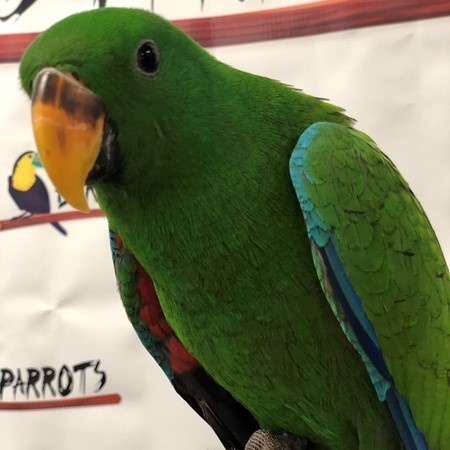
Solomon island Eclectus parrot for sale
Solomon island Eclectus parrot for sale also known as Solomon Island Eclectus Parrots –
Solomon Island Eclectus Smaller than the New Guinea Eclectus, the Solomon Island Eclectus is 12 inches (32cm) in length, occur naturally throughout the Solomon Islands east of mainland New Guinea and northeast of Australia in the Pacific Ocean; these islands include New Georgia, Malaita, Santa Isabel, Guadalcanal, San Cristobal, and Choiseul.
They are also native to Bougainville, New Britain, New Ireland, the Admiralty Islands and throughout the Bismark Archipelago.
Throughout their natural range, they are most common but they are impacted by deforestation within their range and political unrest on some of these islands. Therefore, their future is uncertain.
These regal, colorful parrots are also very popular in captivity as pets.
Male Solomon Eclectus Parrots have yellow-tinted green feathering over the majority of their bodies. Their primary wing-coverts and primary flight feathers are a dark blue color, edged in green. The upper side of the Solomon Eclectus male’s tail is green. The underside of the tail is black, edged with a thin band of pale yellow stretching for about ten millimeters. The iris is a reddish-orange color. Solomon island eclectus parrot for sale
Female Solomon Eclectus Parrots have stunning red plumage with dark blue under-wing coverts. They also have a band running to the nape that is dark blue.
Read the full article
#Bluemutationsolomonislandeclectusforsale#Bluesolomonislandeclectus#Bluesolomonislandeclectusforsale#BuySolomonislandeclectus#Eclectusparrotsforsalekzn#Malesolomonislandeclectusforsale#Solomonislandeclectusaspets#Solomonislandeclectusbirdsforsale#Solomonislandeclectusfemale#Solomonislandeclectusforsale#Solomonislandeclectusforsalesouthafrica#solomonislandeclectusforsaleuk#SOLOMONISLANDECLECTUSPARROTFORSALE
0 notes
Text
SOLOMON ISLAND ECLECTUS PARROT FOR SALE
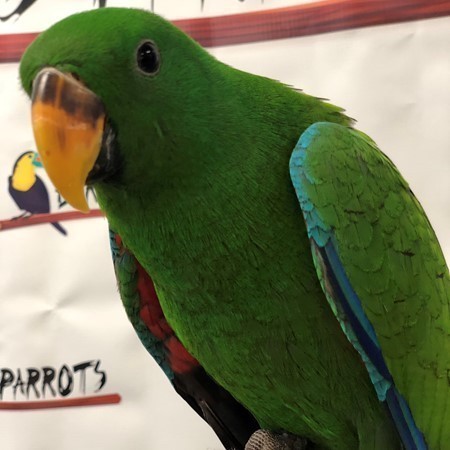
Solomon island Eclectus parrot for sale
Solomon island Eclectus parrot for sale also known as Solomon Island Eclectus Parrots –
Solomon Island Eclectus Smaller than the New Guinea Eclectus, the Solomon Island Eclectus is 12 inches (32cm) in length, occur naturally throughout the Solomon Islands east of mainland New Guinea and northeast of Australia in the Pacific Ocean; these islands include New Georgia, Malaita, Santa Isabel, Guadalcanal, San Cristobal, and Choiseul.
They are also native to Bougainville, New Britain, New Ireland, the Admiralty Islands and throughout the Bismark Archipelago.
Throughout their natural range, they are most common but they are impacted by deforestation within their range and political unrest on some of these islands. Therefore, their future is uncertain.
These regal, colorful parrots are also very popular in captivity as pets.
Male Solomon Eclectus Parrots have yellow-tinted green feathering over the majority of their bodies. Their primary wing-coverts and primary flight feathers are a dark blue color, edged in green. The upper side of the Solomon Eclectus male’s tail is green. The underside of the tail is black, edged with a thin band of pale yellow stretching for about ten millimeters. The iris is a reddish-orange color. Solomon island eclectus parrot for sale
Female Solomon Eclectus Parrots have stunning red plumage with dark blue under-wing coverts. They also have a band running to the nape that is dark blue. Females have dark blue, green-edged primary coverts and primary flight feathers like the male, as well. Their irises are a light yellow-white color. Unlike the hens of other Eclectus sub-species, the Solomon female has no visible yellow or orange coloration – only red and blue, with some under colors of green that are not normally visible.
Care and Feeding Solomon island Eclectus parrot for sale
In the wild, their diet is varied and is mostly centered on various fruits, like mangos, papaya, bananas, apples, guavas, and various other exotic fruits. Solomon Island parrot will thrive on a balanced diet of fruits, vegetables, seeds, spray millet and nuts. If these parrots do not receive enough vitamins and minerals, they can develop a condition of muscle spasms which, while not dangerous, can cause some discomfort. That’s why you should always aim for high quality and a well-researched diet with your pet Eclectus.
*KINDLY CONTACT US NOW ………
*Call, Text Or Whats–App :…………((((( +1 323-761-0775 )))))
*E–Mail Address:……..((((( [email protected] )))))
*Website:……(((( http://www.cheapmacawsonline.com )))))
SEND US AN E-MAIL VIA [email protected]
Read the full article
#Bluemutationsolomonislandeclectusforsale#Bluesolomonislandeclectus#Bluesolomonislandeclectusforsale#BuySolomonislandeclectus#Eclectusparrotsforsalekzn#Malesolomonislandeclectusforsale#Solomonislandeclectusaspets#Solomonislandeclectusbirdsforsale#Solomonislandeclectusfemale#Solomonislandeclectusforsale#Solomonislandeclectusforsalesouthafrica#solomonislandeclectusforsaleuk#SOLOMONISLANDECLECTUSPARROTFORSALE
0 notes